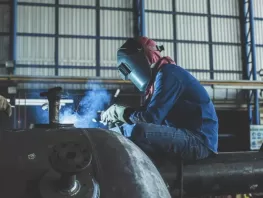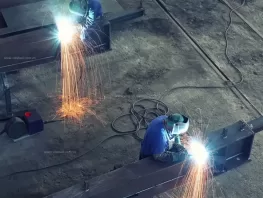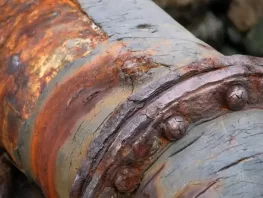
Fire Safety in Industrial Coatings: What You Need to Know
Posted Feb 03, 2025 by Dave Scaturro

Fire safety is a critical consideration in industrial settings, where hazardous materials, high temperatures, and operational risks can contribute to potential fire hazards. One of the most effective ways to enhance fire protection in these environments is through the application of fire-resistant industrial coatings. These specialized coatings play a crucial role in slowing the spread of flames, protecting structural integrity, and giving occupants more time to respond in an emergency.
Why Fire-Resistant Coatings Matter
Industrial facilities house machinery, electrical systems, and combustible materials that can easily fuel a fire if not properly protected. Fire-resistant coatings help mitigate these risks by acting as a barrier against extreme heat and flames. Without adequate fire protection, fires can spread rapidly, leading to devastating damage, costly downtime, and serious safety concerns.
Fire-resistant coatings work by either reflecting heat away from the surface or by undergoing a chemical reaction when exposed to high temperatures, forming a protective char layer that insulates the structure underneath. These coatings are essential for protecting steel frameworks, pipelines, walls, and other critical components in industrial environments.
Types of Fire-Resistant Coatings
Not all fire-resistant coatings are the same. The type of coating you choose depends on your industry, the materials you need to protect, and the fire safety regulations applicable to your facility. Here are some common types:
Intumescent Coatings – These coatings expand when exposed to heat, creating a thick, insulating layer that helps prevent structural components from reaching critical temperatures.
Cementitious Coatings – Made from cement-based materials, these coatings provide a durable and non-combustible fire barrier, often used in high-risk environments.
Thermal Barrier Coatings – Designed to reduce heat transfer, these coatings protect materials from prolonged exposure to high temperatures.
Fire-Retardant Paints – These coatings contain flame-inhibiting compounds that help slow down the ignition process and flame spread.
Each of these coatings serves a specific purpose, and selecting the right one requires a thorough assessment of your facility’s fire risks and compliance requirements.
Regulatory Compliance and Fire Safety Standards
Industrial coatings must meet stringent fire safety regulations to ensure optimal protection. Organizations such as OSHA (Occupational Safety and Health Administration), NFPA (National Fire Protection Association), and local fire codes establish guidelines for the proper selection and application of fire-resistant coatings. Non-compliance can result in hefty fines, liability risks, and increased vulnerability in the event of a fire.
Regular inspections and maintenance are also key to ensuring fire-resistant coatings continue to perform effectively over time. Factors such as wear, exposure to harsh conditions, and chemical exposure can impact the durability of these coatings, making routine evaluations essential.
Protect Your Facility with the Right Fire-Resistant Coating
Fire safety is not something to take lightly, especially in industrial settings where the stakes are high. Investing in the right fire-resistant coatings can make all the difference in protecting your assets, ensuring employee safety, and maintaining compliance with industry standards.
Don’t wait until it’s too late—contact our team today to assess your facility’s fire protection needs and find the best industrial coating solutions for your business.









